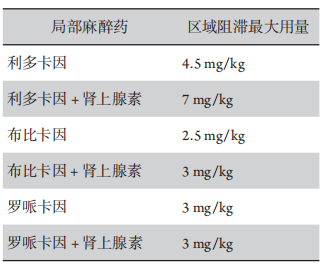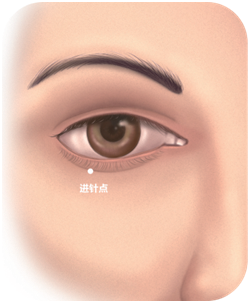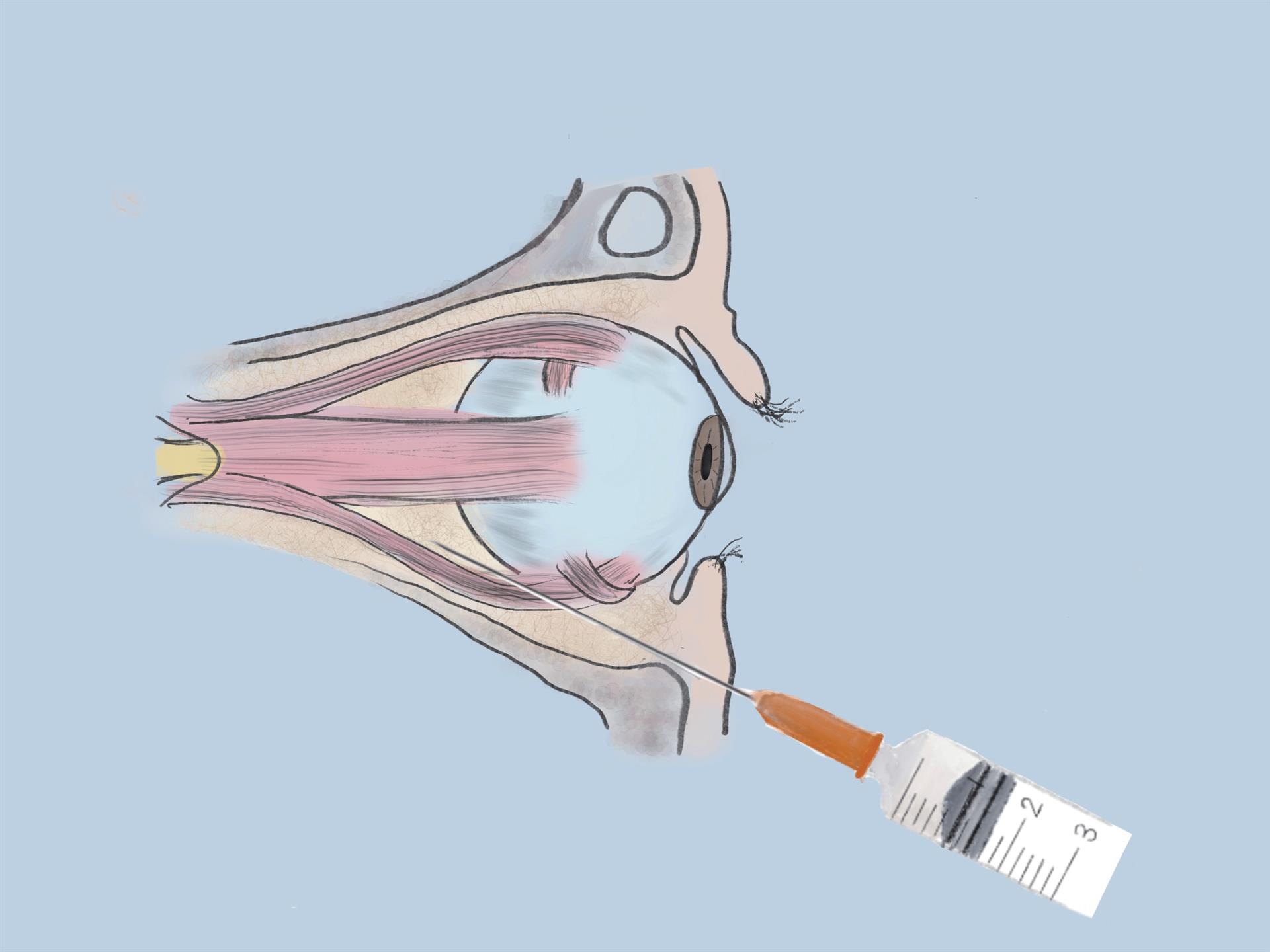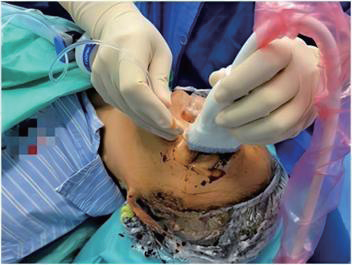1、Tumbadi KL, Nagaraj KB, Mathew A, et al. Manual small-incision cataract surgery under topical anesthesia[J]. Indian J Ophthalmol, 2022, 70(11): 4026-4028.
Tumbadi KL, Nagaraj KB, Mathew A, et al. Manual small-incision cataract surgery under topical anesthesia[J]. Indian J Ophthalmol, 2022, 70(11): 4026-4028.
2、Pucchio A, Pur DR, Dhawan A, et al. Anesthesia for ophthalmic surgery: an educational review[J]. Int Ophthalmol, 2023, 43(5): 1761-1769.Pucchio A, Pur DR, Dhawan A, et al. Anesthesia for ophthalmic surgery: an educational review[J]. Int Ophthalmol, 2023, 43(5): 1761-1769.
3、Kumar CM, Seet E, Chua AWY. Updates in ophthalmic anaesthesia in adults[J]. BJA Educ, 2023, 23(4): 153-159.
Kumar CM, Seet E, Chua AWY. Updates in ophthalmic anaesthesia in adults[J]. BJA Educ, 2023, 23(4): 153-159.
4、Yannuzzi NA, Sridhar J, Flynn HW Jr, et al. Current trends in vitreoretinal anesthesia[J]. Ophthalmol Retina, 2019, 3(9): 804-805.
Yannuzzi NA, Sridhar J, Flynn HW Jr, et al. Current trends in vitreoretinal anesthesia[J]. Ophthalmol Retina, 2019, 3(9): 804-805.
5、McRae L, Presland A. A review of current ophthalmic anaesthetic practice[J]. Br Med Bull, 2020, 135(1): 62-72.
McRae L, Presland A. A review of current ophthalmic anaesthetic practice[J]. Br Med Bull, 2020, 135(1): 62-72.
6、Lodhi O, Tripathy K. Anesthesia for Eye Surgery[M]. Treasure Island (FL): StatPearls Publishing, 2023.
Lodhi O, Tripathy K. Anesthesia for Eye Surgery[M]. Treasure Island (FL): StatPearls Publishing, 2023.
7、Gospe SM, Bhatti MT. Orbital Anatomy[J]. Int Ophthalmol Clin, 2018, 58(2): 5-23.
Gospe SM, Bhatti MT. Orbital Anatomy[J]. Int Ophthalmol Clin, 2018, 58(2): 5-23.
8、Ha%C5%82adaj%20R.%20Anatomical%20variations%20of%20the%20ciliary%20ganglion%20with%20an%20emphasis%20on%20the%20location%20in%20the%20orbit%5BJ%5D.Anat%20Sci%20Int%2C%202020%2C%2095(2)%3A%20258-264.%0AHa%C5%82adaj%20R.%20Anatomical%20variations%20of%20the%20ciliary%20ganglion%20with%20an%20emphasis%20on%20the%20location%20in%20the%20orbit%5BJ%5D.Anat%20Sci%20Int%2C%202020%2C%2095(2)%3A%20258-264.%0A
9、Clarke J, Seah HM, Foo A, et al. Computed tomography scan measurements of the globe and orbit to assess the risks of traumatic complications from medial peribulbar anaesthesia[J]. BMC Anesthesiol, 2022, 22(1): 133.
Clarke J, Seah HM, Foo A, et al. Computed tomography scan measurements of the globe and orbit to assess the risks of traumatic complications from medial peribulbar anaesthesia[J]. BMC Anesthesiol, 2022, 22(1): 133.
10、Polania Gutierrez JJ, Riveros Perez E. Retrobulbar block[M]. Treasure Island (FL): StatPearls Publishing, 2023.
Polania Gutierrez JJ, Riveros Perez E. Retrobulbar block[M]. Treasure Island (FL): StatPearls Publishing, 2023.
11、Singh SR, Saini V, Singh A, Dogra M. Commentary: Role of alpha-2 agonists in regional ophthalmic anesthesia[J]. Indian J Ophthalmol, 2019, 67(7):1247-1248.Singh SR, Saini V, Singh A, Dogra M. Commentary: Role of alpha-2 agonists in regional ophthalmic anesthesia[J]. Indian J Ophthalmol, 2019, 67(7):1247-1248.
12、Mohankumar A, Rajan M. Role of hyaluronidase as an adjuvant in local anesthesia for cataract surgery[J]. Indian J Ophthalmol, 2023, 71(7): 2649-2655.Mohankumar A, Rajan M. Role of hyaluronidase as an adjuvant in local anesthesia for cataract surgery[J]. Indian J Ophthalmol, 2023, 71(7): 2649-2655.
13、Dogra M, Singh S, Saini V, et al. Commentary: role of alpha-2 agonists in regional ophthalmic anesthesia[J]. Indian J Ophthalmol, 2019, 67(7): 1247.Dogra M, Singh S, Saini V, et al. Commentary: role of alpha-2 agonists in regional ophthalmic anesthesia[J]. Indian J Ophthalmol, 2019, 67(7): 1247.
14、Bodenbender JP, Eberhart L, Paul C, et al. Efficacy of adjuvants in ophthalmic regional anesthesia: a systematic review and network meta-analysis[J]. Am J Ophthalmol, 2023, 252: 26-44.Bodenbender JP, Eberhart L, Paul C, et al. Efficacy of adjuvants in ophthalmic regional anesthesia: a systematic review and network meta-analysis[J]. Am J Ophthalmol, 2023, 252: 26-44.
15、Foad AZ, Mansour MA, Ahmed MB, et al. Real-time ultrasound-guided retrobulbar block vs blind technique for cataract surgery (pilot
study)[J]. Local Reg Anesth, 2018, 11: 123-128.Foad AZ, Mansour MA, Ahmed MB, et al. Real-time ultrasound-guided retrobulbar block vs blind technique for cataract surgery (pilot
study)[J]. Local Reg Anesth, 2018, 11: 123-128.
16、甘小亮, 王古岩. 做好眼科麻醉的几点思考[J]. 中华医学杂志, 2022, 102(21): 1564-1567.
Gan XL, Wang GY. Several considerations on how to achieve perfect ophthalmic anesthesia[J]. Chin J Med, 2022, 102(21): 1564-1567.甘小亮, 王古岩. 做好眼科麻醉的几点思考[J]. 中华医学杂志, 2022, 102(21): 1564-1567.
Gan XL, Wang GY. Several considerations on how to achieve perfect ophthalmic anesthesia[J]. Chin J Med, 2022, 102(21): 1564-1567.
17、Guerrier G, Rothschild PR, Lehmann M, et al. Learning medial canthus retrobulbar anaesthesia for eye surgery: ophthalmic surgeons versus anaesthetists[J]. Anaesth Crit Care Pain Med, 2019, 38(2): 183-184.Guerrier G, Rothschild PR, Lehmann M, et al. Learning medial canthus retrobulbar anaesthesia for eye surgery: ophthalmic surgeons versus anaesthetists[J]. Anaesth Crit Care Pain Med, 2019, 38(2): 183-184.
18、McHugh TA. Implications of inspired carbon dioxide during ophthalmic surgery performed using monitored anesthesia care[J]. AANA J, 2019, 87(4): 285-290.McHugh TA. Implications of inspired carbon dioxide during ophthalmic surgery performed using monitored anesthesia care[J]. AANA J, 2019, 87(4): 285-290.
19、Ar%C4%B1c%C4%B1%20C%2C%20G%C3%B6nen%20B%2C%20Mergen%20B%2C%20et%20al.%20Orbital%20compartment%20syndrome%20secondary%20to%20retrobulbar%20hematoma%20after%20infratrochlear%20nerve%20block%20for%20nasolacrimal%20probing%5BJ%5D.%20Ulus%20Travma%20Acil%20Cerrahi%20Derg%2C%202022%2C%2028(5)%3A%20711-713.%0AAr%C4%B1c%C4%B1%20C%2C%20G%C3%B6nen%20B%2C%20Mergen%20B%2C%20et%20al.%20Orbital%20compartment%20syndrome%20secondary%20to%20retrobulbar%20hematoma%20after%20infratrochlear%20nerve%20block%20for%20nasolacrimal%20probing%5BJ%5D.%20Ulus%20Travma%20Acil%20Cerrahi%20Derg%2C%202022%2C%2028(5)%3A%20711-713.%0A
20、Babu N, Kumar J, Kohli P, et al. Clinical presentation and management of eyes with globe perforation during peribulbar and retrobulbar anesthesia: a retrospective case series[J]. Korean J Ophthalmol, 2022, 36(1): 16-25.Babu N, Kumar J, Kohli P, et al. Clinical presentation and management of eyes with globe perforation during peribulbar and retrobulbar anesthesia: a retrospective case series[J]. Korean J Ophthalmol, 2022, 36(1): 16-25.
21、Yannuzzi NA, Swaminathan SS, Hussain R, et al. Repair of rhegmatogenous retinal detachment following globe perforation by retrobulbar anesthesia[J]. Ophthalmic Surg Lasers Imaging Retina, 2020, 51(4): 249-251.Yannuzzi NA, Swaminathan SS, Hussain R, et al. Repair of rhegmatogenous retinal detachment following globe perforation by retrobulbar anesthesia[J]. Ophthalmic Surg Lasers Imaging Retina, 2020, 51(4): 249-251.
22、Palte HD, Gayer S. Pediatric eye blocks: threading the needle[J]. Reg Anesth Pain Med, 2018, 43(1): 103.Palte HD, Gayer S. Pediatric eye blocks: threading the needle[J]. Reg Anesth Pain Med, 2018, 43(1): 103.
23、Gaw%C4%99cki%20M%2C%20Grzybowski%20A.%20Diplopia%20as%20the%20complication%20of%20cataract%20surgery%5BJ%5D.%20J%20Ophthalmol%2C%202016%2C%202016%3A%202728712.Gaw%C4%99cki%20M%2C%20Grzybowski%20A.%20Diplopia%20as%20the%20complication%20of%20cataract%20surgery%5BJ%5D.%20J%20Ophthalmol%2C%202016%2C%202016%3A%202728712.
24、Nanda T, Ross L, Kerr G. A case of brainstem anesthesia after retrobulbar block for globe rupture repair[J]. Case Rep Anesthesiol, 2021, 2021: 2619327.Nanda T, Ross L, Kerr G. A case of brainstem anesthesia after retrobulbar block for globe rupture repair[J]. Case Rep Anesthesiol, 2021, 2021: 2619327.
25、Wang YL, Lan GR, Zou X, et al. Apnea caused by retrobulbar anesthesia: a case report[J]. World J Clin Cases, 2022, 10(31): 11646-11651.
Wang YL, Lan GR, Zou X, et al. Apnea caused by retrobulbar anesthesia: a case report[J]. World J Clin Cases, 2022, 10(31): 11646-11651.
26、Kostadinov I, Hostnik A, Cvenkel B, et al. Brainstem anaesthesia after retrobulbar block[J]. Open Med (Wars), 2019, 14: 287-291.
Kostadinov I, Hostnik A, Cvenkel B, et al. Brainstem anaesthesia after retrobulbar block[J]. Open Med (Wars), 2019, 14: 287-291.
27、Williams B, Schechet SA, Hariprasad I, et al. Contralateral amaurosis after a retrobulbar block[J]. Am J Ophthalmol Case Rep, 2019, 15: 100487.
Williams B, Schechet SA, Hariprasad I, et al. Contralateral amaurosis after a retrobulbar block[J]. Am J Ophthalmol Case Rep, 2019, 15: 100487.







